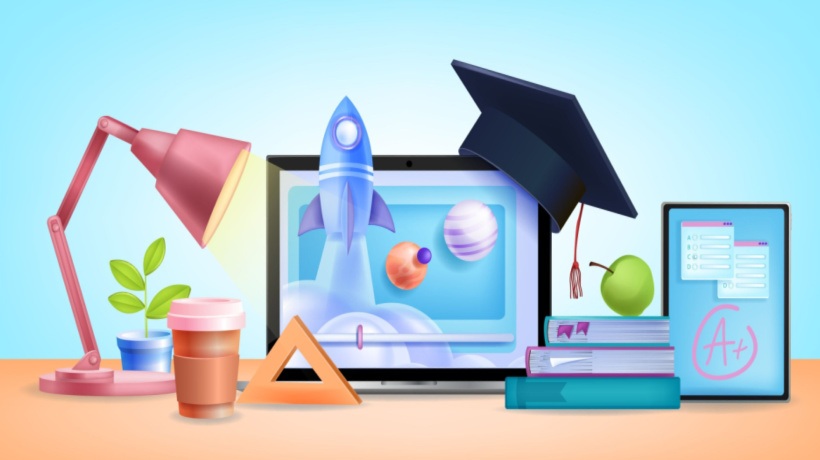Introduction
Under the influence of COVID-19, L&D has been converting offline formal learning into online learning on a large scale. This conversion to online reinforces the perception that L&D is mainly working with formal learning. In my opinion, the role of L&D is much wider and more important than this. The core business of L&D should be not only formal but also informal learning in organizations. The problem is that informal learning is often not visible. That is why MLV (Make Learning Visible) is relevant for L&D.
Visible, Formal Learning
The visibility of formal learning through training, coaching, eLearning, diplomas, and certificates is recognized and well established in organizations. The COVID-19 pandemic made formal learning even more visible on a global scale. From an L&D business model perspective, the value proposition is: delivering formal learning based on the needs of stakeholders and clients in organizations [1]. It is fair to say that formal learning is the raison d’être of L&D in the organizational landscape.
In our industry, we find a growing awareness of the need to strengthen L&D’s value proposition with formal learning solutions guided by science. Neelen and Kirschner talk about learning experiences based on scientific evidence [2]. In conversations with stakeholders and clients, this "guided by science" principle brings L&D to a better position. Salas provides evidence about the value of evidence-informed formal learning solutions for increasing organizational performance [3]. Morin sees also the positive impact of training on organizational performance [4]. But Garavan et al. are questioning the methodology of measuring the complex relationship between formal learning and organizational performance [5].
HR-ization Of L&D
The higher visibility of formal learning is good news for the HR department. In many organizations, L&D is positioned within HR. As a consequence, better performance of L&D (higher visibility of online learning solutions) will also contribute to a higher HR profile on the corporate radar. This contributes to the "HR-ization of L&D," where HR benefits from a better performance of L&D [6].
HR-ization refers to the situation in which the value of formal learning translates more into HR goals than into business goals. L&D reports to HR and is a part of the HR scorecard. For HR it is positive if L&D contributes to HR goals such as employability, employee engagement, (personalized) learning opportunities for the workforce, the license to operate (compliance), and so on. The visibility of formal learning solutions gets even more attention by the activity-based reporting of HR (overview of numbers of formal learning solutions, participants, certificates, downloads, and so on).
But the HR-ization of L&D is moving L&D away from the business in the direction of HR and formal learning. According to Cross, HR, stakeholders, and customers consistently confuse learning in organizations with formal learning solutions [7]. There is a blind spot for informal learning.
Invisible Informal Learning
Van Woerkom refers to learning by working as:
The natural learning process that is interwoven with the daily work process and which is strongly based on daily experiences. Many of these learning processes will remain implicit. Learning is more than acquiring knowledge, and we learn from our experiences without being aware of it [8].
In organizations, individuals also learn informally through task experience. According to Argote, there is much scientific evidence in psychological literature for the relationship between task experience and better performance, ranging from making a pizza to working in factories or in challenging projects [9]. This learning is often invisible despite the fact that almost everyone experiences it.
Cerasoli describes informal learning in behaviors:
Informal learning behaviors (ILBs) are non-curricular behaviors and activities pursued in service of knowledge and skill acquisition that take place outside formally designated learning contexts. Such activities are predominantly self-directed, intentional, and field-based. Informal learning behaviors are not syllabus-based, discrete, or linear [10].
Other examples of evidence-informed informal learning behaviors are actively participating in after-action reviews (AAR) [11] and improvement teams [12]. Using the PDSA cycle, informal learning occurs by working in improvement teams, where team members learn how to improve routines, tasks, and processes in order to achieve better performance and organizational results [13]. Finding out how to improve performance is in line with the definition of the PDSA cycle: a systematic process for gaining valuable learning and knowledge for the continual improvement of a product, process, or service [14].
Spoiler Alert 1
Informal learning is not more important than formal learning. According to Argote [9], Cerasoli [10], and de Grip [15], for example, it is clear that prior knowledge through formal learning reinforces informal learning. It can also work the other way around. This is evident from the example of Tesla, below.
(In)formal Learning In Practice
At the beginning of the COVID-19 pandemic, Tesla, like other automotive companies, conceived the plan to design and produce respiratory equipment. That may seem like a strange move for a car manufacturer, but the video illustrates that many parts of the newly designed ventilator come from the Model S and the Model 3. The design team did not first undertake formal training on "how to design a ventilator"! But, on the other hand, they don’t design without having the knowledge to do this job as an engineer. During the design process, knowledge was regularly updated and validated by literature, colleagues, and all other resources needed to produce safe ventilators. The learning process is seen during the design of the ventilator as a blend of informal and formal learning through work. This is the video from the Tesla team talking about designing the ventilator.
Without both formal and informal learning, the Tesla team would not have been able to produce respirators. Following this design process for the ventilator, the Tesla team will not be capable of pinpointing their informal learning exactly, illustrating the fact that most of the informal learning that occurred is invisible.
Time Spent On Corporate Learning
According to the ATD State of Industry Reports, the average number of hours spent in formal learning is 34 per year [16]. On the other hand, the number of hours spent learning informally is substantially higher. ROA finds an average percentage of 20–25% of the working hours per year is spent learning informally, partly depending on the level of education [17]. To place this into the perspective of L&D services, on an annual basis, if people work an average of 1700 hours [18], then informal learning through work occupies 340 hours (20%) and formal learning 34 hours (2%).
Spoiler Alert 2
The numbers and percentages are not absolute, but Cerasoli concludes, based on a meta-analysis, that “the simple fact that employees spend far more time working than in formal training provides a prima facie case for the potentially large impact of informal learning [10].”
The shift of formal learning to online and to the workplace should not be confused with informal learning. It is a change of the formal learning channel. This is fine but often doesn’t include informal learning as defined by van Woerkom [8] and Cerasoli [10]. Given the time workers spend on formal and informal learning, it makes sense for L&D to expand their services and support all learning in organizations.
MLV: Dos And Don’ts
Informal learning is mostly invisible. If L&D wants to expand services and include informal learning, the first step can be to make informal learning visible for stakeholders, clients, and L&D professionals. Table 1 describes 5 dos and don’ts to make learning visible.
Table 1: A brief overview of 5 dos and don’ts to make learning visible.

Don’t See Formal And Informal Learning In Competition
L&D’s current one-sided focus on formal learning is the logical outcome of the stakeholders' and customers’ expectations [16]. But it also represents an atomistic vision of how people learn while working. A more holistic, inclusive view of learning in organizations should include both formal and informal learning. By making informal learning visible, L&D creates excellent opportunities to expand its services by exploiting the value of both formal and informal learning. This should not be done with the intention of bringing informal and formal learning into competition. MLV creates opportunities for L&D to realize business alignment and business impact with formal and informal learning, beyond the HR-ization of L&D.
References:
[1] Arets, J. To be published in 2022. "Part 2". In Value-Based L&D. Redefining L&D’s Business Models. Tulser.
[2] Neelen, M., and P. A. Kirschner. 2020. Evidence-Informed Learning Design: Creating Training to Improve Performance. London: Kogan Page Publishers.“A learning experience is any type of experience that is designed to facilitate and support learning. The word ‘experience’ emphasize that learning is affected by a person’s involvement in or exposure to something. It also acknowledges that learning can be experienced in many ways and in a wide variety of contexts and that learning is a journey, a process that take place over a period of time.”
[3] The Science of Training and Development in Organizations : What Matters in Practice
[4] The impact of training on firm outcomes: longitudinal evidence from Canada
[5] Measuring the organizational impact of training: The need for greater methodological rigor
[6] Arets, J. To be published in 2022. "Part 1". Value-Based L&D. Redefining L&D’s Business Models. Tulser.
[7] Cross, J. 2006. Informal Learning: Rediscovering the Natural Pathways that Inspire Innovation and Performance. San Francisco: John Wiley & Sons.
[8] The Concept of Critical Reflection and Its Implications for Human Resource Development
[9] Argote, L. 2013. Organizational Learning: Creating, Retaining and Transferring Knowledge. New York: Springer.
[10] Antecedents and Outcomes of Informal Learning Behaviors: a Meta-Analysis
[11] Debriefing in the OR: A Quality Improvement Project
[12] For more than a decade we support improvement teams (lean, agile) with a blend of formal and informal learning, producing measurable business impact. It’s beyond the scope of this article to describe this approach more in-depth, see this free download: Arets, J, and V. Heijnen. 2008. Costly Misconception, from Training to Business Improvement. Academic Service: The Hague (only available in Dutch).
[14] PDSA Cycle
[15] de Grip, A. 2015. “The Importance of Informal Learning at Work.” IZA World of Labor (June): 1–10.
[16] ATD. 2019. State of Industry Report. Alexandria.
[17] ROA (Research Centre For Education and the Labour Market). 2017. Fact Sheet: How and where do workers learn? Maastricht.
[18] Average annual hours actually worked per worker
[19] Arets, J., et al. 2015. 70:20:10 Towards 100% performance. Maastricht: Sutler Media B.V.








